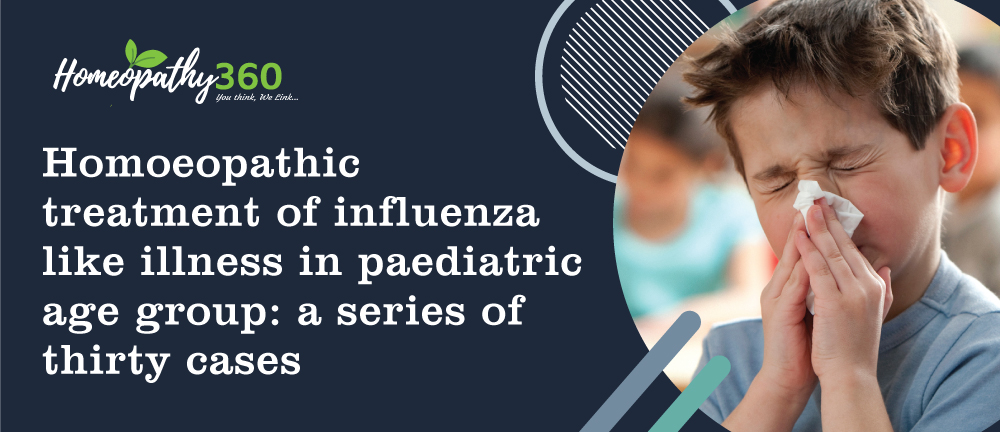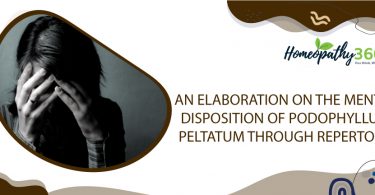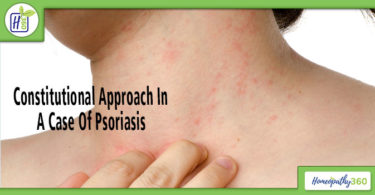
ABSTRACT
Background: Over the years the prevalence of communicable diseases has decreased over time, but viral infections, particularly influenza, are on the rise, necessitating preventive and therapeutic efforts.
Objectives: To evaluate the effectiveness of individualized homoeopathic medicines in influenza like illness in paediatric age group (primary objective) and to highlight the most commonly indicated medicines in such cases, to report complications (if any), duration of illness (secondary objectives).
Material and methods: A retrospective, non-comparative, open-label observational study of 30 paediatric cases of influenza like illness (ILI) are presented that were treated from April 2021 to July 2021 at the outdoor patient department (OPD) of R.B.T.S. Govt. Homoeopathic College and Hospital with individualised homoeopathic remedies. The symptoms of ILI were assessed as per criteria laid down by Ministry of Health and Family Welfare, Govt. of India. There were 21 girls and 9 boys in the case series, with a mean age of 9.2 years, and a mean follow up from treatment of 3 days. The mean time between the onset of the appearance of ILI and the first visit at the OPD was 2 days without prior self-medication. Homoeopathic treatment was given on an individualized basis according to homoeopathic principles.
Results: All the patients responded significantly to their homoeopathic remedies specific for each case. Out of 30 paediatric cases, Bryonia alba (n=10, 33.33%) and Rhus toxicodendron (n=08, 26.67%) were found to be the most useful medicines. There was a significant difference in temperature from 2nd day onwards. Likewise, significant improvement was noticed in cough, nasal complaints and sore throat on 1st day; symptoms of headache, myalgia, chill and malaise were relieved on the 2nd day. The homoeopathic treatment shortened the duration of illness with a mean of 2.5 days and was also devoid of any complications.
Conclusion: The study enumerated the significant effect of individualized homoeopathic treatment in patients suffering from ILI with shortened duration of illness and absence of any complications or sequel.
KEYWORDS: Influenza like illness, case series, paediatric patients, individualized homoeopathic medicines, Bryonia alba, Rhus toxicodendron.
ABBREVIATIONS: influenza like illness (ILI), outdoor patient department (OPD), polymerase chain reaction (PCR)
INTRODUCTION
Influenza is regarded as one of the most serious infectious diseases in the world [1]. It is caused by different strains of virus that produce symptoms with some variation and is better known as Influenza like illness (ILI). Even World Health Organization (WHO) has set up national influenza centres in Western Pacific and South-East Asian regions for its surveillance and taking prompt action during the pandemic by issuing pandemic alert and helping the states to develop effective health care plans.
Influenza is a public health issue, particularly among the elderly, children under the age of five, pregnant women, and those with certain chronic diseases and disorders. Each year, influenza causes 3–5 million instances of severe illness and 250,000–500,000 fatalities worldwide, with the majority of cases occurring in high-risk categories [2]. Influenza is also a leading cause of lost productivity and absenteeism at work. Because virological or molecular testing is not possible for all cases of influenza, it is monitored based on the presentation of influenza-like symptoms and is so commonly referred to as “influenza-like illness” (ILI). On the 16th of May 2009, the first case of P-09-H1N1 (flu) positivity in India was reported. Testing for influenza began in June 2009 and lasted until July 2010 in Eastern India to assess the prevalence and epidemiological characteristics of the circulating pandemic H1N1 (H1N1) strain. Patients with influenza-like symptoms who sought medical care in local government hospitals had their nasal and throat swab samples tested using real-time polymerase chain reaction (PCR). Influenza viruses are spread through the air, and infections can range from mild to severe and life-threatening. Vaccination and antiviral medication are the two most common pharmaceutical approaches for influenza management and prevention, yet neither is perfect. Influenza vaccines, which have been in use for a long time, are safe, but they must be given every year, and their immunogenicity is lower in high-risk categories, such as very young children, the elderly, and seriously immunocompromised patients, than in the general population.
Homoeopathy, from time immortal have been looked upon as a system of medicine for the cure of long standing chronic diseases but in reality this art of holistic prescribing has earned itself laurels in the field of acute, infectious diseases too specifically because of the number and variety of its therapeutics, which can be matched with the variety of disease presentations. Homoeopaths had claimed greater success in the past pandemics, especially during the 1918 pandemic [3]. In the past also, a few clinical trials in ILI with homoeopathic intervention yielded positive results. There has been at least one randomised controlled trial that has investigated the effectiveness of individualised homoeopathic treatment of ILI [4]. However, the first retrospective case series describing the effectiveness of individualised homoeopathic medicines in the treatment of ILI in paediatric age group is already being reported. In this study, homoeopathy has shown beneficial results but still large-scale, controlled clinical trials are required in this field.
OBJECTIVES:
Primary objective
To evaluate the effectiveness of individualised homoeopathic medicines in influenza like illness in paediatric age group.
Secondary objectives
To highlight the most commonly indicated medicines with their indications.
To assess the duration of illness.
To report complications (if any).
MATERIAL AND METHODS:
Research methodology and study design
A retrospective, non-comparative, open-label observational study of 30 paediatric cases of Influenza like illness (ILI) are presented that were treated from April 2021 to July 2021 at the Outdoor Patient Department (OPD) of R.B.T.S. Govt. Homoeopathic College and Hospital with individualized homoeopathic remedies. The symptoms of ILI were assessed as per criteria laid down by Ministry of Health and Family welfare, Govt. of India [5]. There were 21 girls and 9 boys in the case series, with a mean age of 9.2 years, and a mean follow up from treatment of 3 days. The mean time between the onset of the appearance of ILI and the first visit at the OPD was 2 days without prior self-medication (Table 1).
Intervention
Patients presenting with symptoms of ILI, viz. fever, headache, myalgia, malaise, sore throat, fatigue, nasal complaints (nasal discharge, obstruction), chill, sweat, and cough were identified. The selection of the homoeopathic treatment for these 30 patients was made on acute totality given on an individualized basis according to homoeopathic principles laid down by Dr Hahnemann in the Organon of Medicine [6]. Final prescription was based on the individualization of the patient, after consulting Materia Medica [7]. Patients were followed-up for a mean time of 3 days during the treatment following homoeopathic principles and second prescription of Kent’s philosophy [8].
Table 1: Baseline characteristics of 30 paediatric patients with Influenza like illness
| Characteristics | No of cases, n (%) |
| SEX Male Female | 09 (30%) 21 (70%) |
| AGE GROUP (years) 3-6 7-9 10-12 13-15 | 05 (16.6%) 06 (20%) 17 (56.6%) 02 (6.6%) |
| DURATION OF COMPLAINTS (days) 1-2 3-4 5-6 | 23 (76.6%) 06 (20%) 01 (3.3%) |
| PREVIOUS TREATMENT TAKEN Yes No | 0 30 (100%) |
| SYMPTOMS PRESENT Fever Nasal complaints Cough Headache Sore throat Chill Myalgia Malaise | 30 (100%) 30 (100%) 30 (100%) 19 (63.3%) 03 (10%) 01 (3.3%) 27 (90%) 07 (23.3%) |
RESULTS
All the patients responded significantly to their homoeopathic remedies specific for each case. Out of 30 paediatric cases, Bryonia alba (n=10, 33.33%) and Rhus toxicodendron (n=08, 26.67%) were found to be the most useful medicines (Table 2). There was a significant difference in temperature from 2nd day onwards. Likewise, significant improvement was noticed in cough, nasal complaints and sore throat on 1st day; symptoms of headache, myalgia, chill and malaise were relieved on the 2nd day. The homoeopathic treatment shortened the duration of illness with a mean of 2.5 days and was also devoid of any complications.
Table 2: Details of the homoeopathic medicines with its symptomatology used in the treatment and duration of illness of 30 paediatric patients with influenza like illness.
| Sl. no. | Name of Medicine | No. of prescription, n (%) | Symptomatology |
| 1 | Bryonia alba | 10 (33.33%) | Fever with dry cough and nasal congestion. Complaints < after taking cold in hot weather. Tongue is dry with great thirst for cold water. < on motion, > rest. |
| 2 | Rhus toxicodendron | 08 (26.67%) | Fever with restlessness and dry cough before and during chill. Tongue is dry and cracked, great thirst. < on rest, > by motion |
| 3 | Aconitum napellus | 03 (10%) | Fever with skin dry and hot and restlessness. Dry cough < on expiration with sneezing. History of cold exposure. Thirst: profuse, appetite: less, tongue: dry |
| 4 | Allium cepa | 02 (6.67%) | Fever with profuse watery discharge and acrid coryza. < in the room, > in open air |
| 5 | Antimonium tartaricum | 01 (3.33%) | Fever with vomiting followed by drowsiness and prostration. Large quantities of mucous comes out while coughing. Tongue is thick, coated. > on open air |
| 6 | Arsenicum album | 01 (3.33%) | Fever with restlessness. Children wants to be carried. Great thirst for cold water < at midnight, cold, > by hot |
| 7 | Belladonna | 01 (3.33%) | Fever with hot and red face, nasal congestion with redness. Headache > by pressure History of cold exposure |
| 8 | Dulcamara | 01 (3.33%) | Fever with profuse, watery nasal discharge and cough. History of exposure to rain, cold. The patients living in a damp area. Sudden changing of weather causing the complaints. |
| 9 | Ipecacuanha | 01 (3.33%) | Fever with constant nauseatic tendency. Dry, spasmodic cough with rattling sound. Tongue is clean with profuse thirst. |
| 10 | Natrium sulphuricum | 01 (3.33%) | Fever with thick yellowish, greenish nasal discharge. <change of weather from dry to damp, > dry weather. |
| 11 | Rumex crispus | 01 (3.33%) | Fever with sore-throat, raw sensation in larynx. Dry cough < from cold air. Very sensitive to cold air. |
DISCUSSION
The current definition of ILI with a sensitivity of about 60% and the specificity of about 5% when influenza is not prevalent, that is, 5% of people who meet the case definition do actually have influenza) to 60‑70% during the influenza season is a sudden rise of temperature >38°C and cough or sore throat in the absence of another diagnosis. Cough, fever, and myalgia, or fatigue are the most common. Notably, sore throat has been reported to be a negative indication of influenza in multiple studies, implying that those who have a sore throat are more likely to have an infection other than influenza [9]. Based on these findings, a new definition has been proposed: “An acute respiratory illness with a measured temperature of 38°C and cough that began within the last 10 days.”
In this retrospective study, majority of the patients constituted 10-12 years age group (n= 17, 56.6%) with mean 10.5 years unlike other studies which stated children upto 5 years of age are more susceptible to ILI [10]. All cases at baseline had fever, cough and nasal complaints (n=30, 100 % respectively). 3 cases (10%) had a sore throat, 27 cases (90%) had myalgia and 7 cases (23.3%) had malaise, 19 cases (63.3%) had headache and 1 case (3.3%) had chill. Although the findings support the suggested criteria of ILI, in this study nasal complaints were found at a higher rate than expected, indistinguishable from the RCT conducted by Chakraborty, et al [4]. All the patients responded significantly to their homoeopathic remedies specific for each case. Amongst the remedies, Bryonia alba was given to 10 patients (33.33%) and Rhus toxicodendron was given to 8 patients (26.67%). Other remedies used were Aconitum napellus (n= 3, 10%), Allium cepa (n= 2, 6.67%), Antimonium tartaricum (n= 1, 3.33%), Arsenicum album (n= 1, 3.33%), Belladonna (n= 1, 3.33%), Dulcamara (n= 1, 3.33%), Ipecacuanha (n= 1, 3.33%), Natrium sulphuricum (n= 1, 3.33%) and Rumex crispus (n= 1, 3.33%). The symptomatology of medicines which formed the basis of prescription has been enumerated in Table 2. Although, the findings corroborate with the other studies conducted on ILI, but Arsenicum album was administered in much lower frequency than expected in the study population. The intensity of symptoms started decreasing after a few hours of taking medicines as narrated by the patients on subsequent follow up. There was a significant difference in temperature from 2nd day onwards. Likewise, significant improvement was noticed in cough, nasal complaints and sore throat on 1st day; symptoms of headache, myalgia, chill and malaise were relieved on the 2nd day. The findings were analogous to various other ILI studies as well. Overall, the illness lasted for about 2-3 days with a mean of 2.5 days without any complications.
Homoeopathy takes a comprehensive approach to patient understanding and integrates this approach to provide individualized patient treatment [11, 12]. Because homoeopathy’s basic therapeutic rule is similia similibus curentur (let like be treated by like), it has the advantage of considering both the causes of diseases and their effects [13]. Therefore, homoeopathic treatment, when given in a timely fashion, may bring about immediate improvement, arrest complications and restore health.
CONCLUSION
The study enumerated the significant effect of individualized homoeopathic treatment in patients suffering from ILI with shortened duration of illness and absence of any complications or sequel.
INFORMED CONSENT
Written consent was obtained from parents of their wards’ case details for publication.
REFERENCES
- Kasper MR, Wierzba TF, Sovann L, Blair PJ, Putnam SD. Evaluation of an influenza‑like illness case definition in the diagnosis of influenza among patients with acute febrile illness in Cambodia. BMC Infect Dis. 2010;10:320.
- Vincent S, Demonceaux A, Deswarte D, Scimeca D, Bordet MF. Management of Influenza-Like Illness by Homoeopathic and Allopathic General Practitioners in France During the 2009–2010 Influenza Season. The journal of alternative and complementary medicine. 2013; 19(2): 146-152.
- Abdul Gafar. Bird Flu‑A fact sheet…. more details.. Available from http://www.homoeoweb.com/bird_flu_more.htm.
- Chakraborty PS, Lamba CD, Nayak D, John MD , Sarkar DB , Poddar A, et al. Effect of individualized homoeopathic treatment in influenza like illness: A multicenter, single blind, randomized, placebo controlled study. Indian Journal of Research in Homoeopathy. 2013 Jan-Mar; 7(1): 22-30.
- WHO global technical consultation: Global standards and tools for influenza surveillance. [Monograph on the Internet] Geneva, WHO: 2011. Available from: http://www.whqlibdoc.who.int/hq/2011/WHO_ HSE_GIP_2011.1_eng.pdf.
- Hahnemann S. Organon of Medicine. 5th and 6th edition; Kolkata: Modern Homoeopathic Publication; 2006.
- Allen HC. Allen’s Keynote Rearranged and classified. 10th edition; New Delhi: B.Jain Publishers Pvt. Ltd.; 2013.
- Kent JT. Lectures on Homoeopathic Philosophy. Low price edition; New Delhi: B.Jain Publishers Pvt. Ltd.; 2009.
- Guidelines on categorization of Seasonal Influenza cases during screening
for home isolation, testing, treatment and hospitalization. Ministry of Health and Family Welfare Seasonal Influenza. 25.02.2019. available from https://ncdc.gov.in
- Monto AS. Seasonal influenza and vaccination coverage. Vaccine 2010;28(suppl4):D33–D44.
- Vithoulkas G, Carlino S. The “continuum” of a unified theory of diseases. Med Sci Monit, 2010; 16(2): SR7–15.
- Vithoulkas G: The basic principles of homoeopathy. Homoeopathy: The Energy Medicine. 1st ed. Athens: International Academy of Classical Homoeopathy; 2013.
- Vithoulkas G: The science of homoeopathy. New York: Grove Press, 1980; 91–92.
About the authors
1Dr Sabiha Naaz, PGT
Deptt. Of Practice of Medicine
R.B.T.S. Govt. Homoeopathic Medical College and Hospital, Muzaffarpur
2Dr Azizul Islam Khadim, PGT
Deptt. Of Practice of Medicine
R.B.T.S. Govt. Homoeopathic Medical College and Hospital, Muzaffarpur





